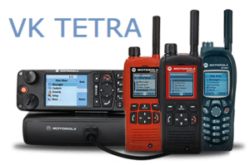Radio Programming Guide Navigation
Radio Programming Guide – Welcome
Radio Programming Guide – Part 1: Things You’ll Need
Radio Programming Guide – Part 2: Reading The Radio
Radio Programming Guide – Part 3: Programming The Basics – Motorola
Radio Programming Guide – Part 4: Programming The Basics – Sepura
Radio Programming Guide – Part 5: SDS To Change Talkgroups
Now that you’ve read the radio (if you’re using Motorola gear), we can go ahead and start programming the basics into the radio to get you talking on the Tetra network.
Note: If you’re programming Sepura radios, you can skip to the next page: Radio Programming Guide – Part 4: Programming The Basics – Sepura
The basics you’ll need to get your radio up and running are below.
| Section | Setting | Notes |
| Subscriber Unit Parameters > Radio ISSI | Your DMR ID | Enter your DMR here. e.g 5050990 |
| Feature Flags > Direct Mode (DMO) | Ticked | Enables DMO mode |
| DMO Parameters > DMO Address Extension > MCC | 901 | |
| DMO Parameters > DMO Address Extension > MNC | 16383 | |
| DMO Parameters >DMO MNI Partnership List > Country Code | 901 | |
| DMO Parameters >DMO MNI Partnership List > Network Code | 16383 | |
| TalkGroups > DMO > DMO Folders List > Name | DMO | Display name for the DMO folder |
| TalkGroups > DMO > DMO Folders List > Status | Ticked | |
| TalkGroups > DMO > DMO Folders List > Transmission Timeout timer, sec | 300 | |
| TalkGroups > DMO > DMO Folders List > Transmission Timeout warning timer, sec | 280 | |
| TalkGroups > DMO > DMO Folders List > Number of talkgroups in range | 1 | This is the number of channels within the folder to display |
| TalkGroups > DMO > DMO Folders List > Receive Only | Not ticked | |
| TalkGroups > DMO > DMO talkgroup List > Name | TETRA GATEWAY | This is the name of the channel that will appear on the display |
| TalkGroups > DMO > DMO talkgroup List > ID | 1 | |
| TalkGroups > DMO > DMO talkgroup List > Status | Programmed | |
| TalkGroups > DMO > DMO talkgroup List > DMO Folders List | DMO | The folder you created above |
| TalkGroups > DMO > DMO talkgroup List > Communication Type | Direct | |
| TalkGroups > DMO > DMO talkgroup List > Gateway Selection | None | |
| TalkGroups > DMO > DMO talkgroup List > Gateway Address | Blank | This field will be blank |
| TalkGroups > DMO > DMO talkgroup List > Frequency Channel | 439.250 | This is the frequency of the gateway you’re connecting to. |
| TalkGroups > DMO > DMO talkgroup List > Receive Call to DMO Partnership Networks | User Defined | |
| TalkGroups > DMO > DMO talkgroup List > Network MCC | 901 | |
| TalkGroups > DMO > DMO talkgroup List > Network MNC | 16383 | |
| TalkGroups > DMO > DMO talkgroup List > TMO Mapping | blank | |
| TalkGroups > DMO > DMO talkgroup List > Key Group | NO_KG | |
| TalkGroups > DMO > DMO talkgroup List > Incoming Call security Class | Security Class 1 | |
| TalkGroups > DMO > DMO talkgroup List > Outgoing Call security class | Security Class 1 |
Once you’re ready, write the changes to the radio. If you’re using the FTDI cable to program the radio, once programming hsa finished remove the jumper between pins 13 and 6, and then wait for the radio to power on (within 30 seconds of removing the jumper).
Note: Increasing the frequency
It is possible to expand the transmit/receive frequency of your motorola radio. Do this at your own risk:
Within Tetra CPS Lab mode > Decimal (D) > cp_net_block > net_data > DMO_range
Change the min and max frequencies to suit. Keep in mind the radio starts to lose sensitivity 5mhz above and below the factory range.
Ready for use!
Once programmed, your radio should now be ready to transmit on the network. Power the radio on, and transmit!
Keep an eye on the dashboard at dashboard.vktetra.com to see if you successfully transmit into the network.
